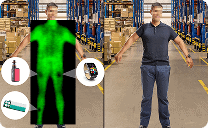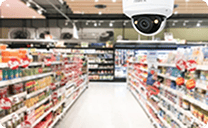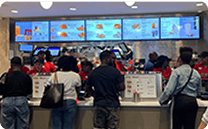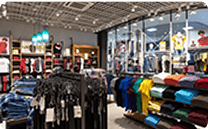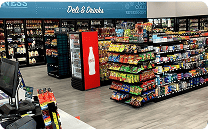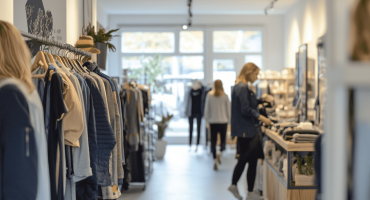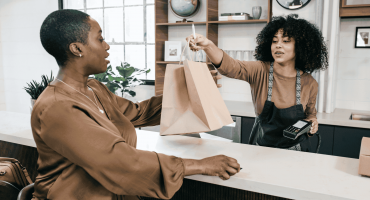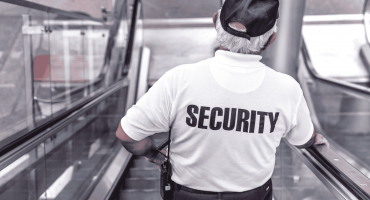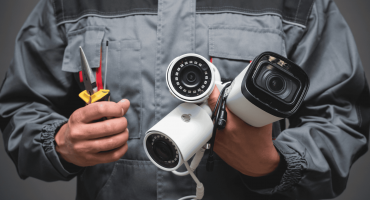In This article
Customer experience in retail has become the ultimate competitive differentiator. Your customers expect more than just transactions, which makes your strategies for enhancing the in-store customer experience critical to your survival and growth. Even as e-commerce grows prodigiously, a compelling in-store retail consumer experience drives customer satisfaction and boosts loyalty and long-term revenue.
To meet rising customer expectations, you need to create and maintain a thoughtfully designed, personalized, and tech-enhanced shopping environment. This post draws from industry best practices, real-world examples, and expert insights to explore top strategies on how to improve customer experience in retail stores. It also discusses potential challenges in implementing these strategies, such as staff training and technology adoption, and provides solutions to overcome them.
Why In-Store Customer Experience Matters
A positive in-store customer experience directly influences how shoppers perceive a brand. That experience also ultimately determines whether your customers make a purchase, return in the future, or recommend your store to others.
As each physical store evolves into a branding tool, a superior customer experience in retail stores is increasingly essential. According to research by customer experience management solution vendor Wavetec, 86% of buyers are willing to pay more for a better customer experience.
Key Influencers of The Retail Experience
- Ambiance: Layout, lighting, music, and scent can all affect mood and buying behavior.
- Customer Service: Engaging, personable, well-trained staff can create positive emotional connections, guide purchase decisions, and enable cross-sell and upsell opportunities.
- Technology: Smart, helpful, and engaging digital tools and interfaces can make shopping smoother and more enjoyable when implemented and supported well.
Top Strategies to Transform and Improve In-Store Experience
Optimizing Store Layout
Efficient store design is a silent but powerful contributor to retail consumer experience. Clear navigation paths, logical product groupings, attractive promotional displays, and uncluttered aisles reduce friction and guide customers naturally. According to a retail experience guide produced by customer and employee experience management platform provider Staffino, improving store layout flow can increase basket size by up to 20%.
Recommended Best Practices:
- Use signage to aid navigation and highlight promotions.
- Place high-margin, impulse, and seasonal offerings in high-traffic and visibility areas.
- Create attractive, comfortable open spaces that invite exploration and can extend dwell time.
Personalized Customer Interactions
Pundits have said for years that people don’t buy products, services, or solutions – they buy stories and feelings. This makes your staff’s ability to connect with your customers critical to your customer experience optimization efforts. Your employees should be hired and trained to assist and engage customers by asking the right questions, offering tailored recommendations, and creating memorable, personalized moments. According to digital product engineering services provider Cybage, personalization can boost sales conversions by over 40%.
Tactics Worth Trying:
- Train staff to recognize repeat customers and address them by name.
- Equip staff with mobile devices and access to customer data so they can offer personalized assistance.
- Empower employees to solve problems on the spot without escalating.
- Acknowledge and reward employees who rise above and beyond and share their experiences and tips to educate and encourage others.
Leveraging Technology
From smart fitting rooms to self-checkout, modern technologies offer multiple opportunities to reduce friction, increase convenience, and elevate the customer experience in retail. Retailers like Sephora and Nike are pioneering how to improve customer experience in retail stores through virtual mirrors, in-app store navigation, real-time stock visibility, and other innovations.
Top Tech Tools:
- Digital kiosks for product discovery, personalization options, and engaging promotions.
- Mobile checkout to shorten order completion times and improve flow.
- AI-powered recommendations to generate cross-sell and upsell opportunities based on browsing and purchase histories.
Enhancing Atmosphere
Ambiance sets the tone for every in-store customer experience. Colors, textures, sounds, and scents work together to form an immersive environment that influences mood and buying behavior. Studies suggest that stores with pleasant atmospheres see 20–40% longer dwell times.
Actionable Enhancements:
- Use warm lighting to create inviting zones.
- Curate music playlists that reflect your brand identity and the customer demographics that matter most to your business.
- Introduce calming scents or themed visual displays for seasonal impact.
Providing Seamless Omnichannel Experience
Modern consumers don’t shop in silos; they want to move freely between digital and physical touchpoints. A seamless customer experience in retail links mobile apps, websites, and stores into a unified journey. Wavetec research has found that omnichannel shoppers have a 30% higher lifetime value than single-channel shoppers.
Some Steps to Take:
- Offer “buy online, pick up in store” (“BOPIS”) options.
- Let customers check in-store product availability and access product details and documentation online.
- Enable returns or exchanges across any channel.
Measuring the Success of Your In-Store Experience Improvements
Implementing customer experience improvement strategies is only half the journey. You must measure the effects of your efforts to refine, replicate, and scale those efforts effectively. By doing so, you’re not just improving the customer experience, you’re taking control of your business’s success.
Key Metrics to Track:
- Foot Traffic – Are your improvements attracting more visitors?
- Conversion Rates – Are more browsers turning into buyers?
- Dwell Time – Are customers spending more time engaging with your space?
- Customer Feedback – Are you collecting valid data via customer surveys, online reviews, and in-store feedback kiosks?
- Sales and Retention – Are customers buying more and returning more often?
You should also explore solutions such as advanced in-store tracking tools and heat maps. These can provide data-driven insights into customers’ interactions with your store and offerings–powerful cues for future improvements.
Conclusion
Digital dominates much of the media, but the in-store customer experience still holds transformative power. Shoppers crave in-person interaction, immersive ambiance, meaningful personalization, and seamless, frictionless transactions. Only brick-and-mortar spaces can offer all of these.
By implementing the top strategies shared above—optimizing layout, training staff, embracing technology, refining atmosphere, and embracing omnichannel integration—you can dramatically elevate the customer experience in retail stores. Measuring the results of your efforts through KPIs and customer sentiment ensures that your improvements are impactful and sustainable. Whether you’re a boutique or a big-box retailer, these moves will help you master how to improve customer experience in retail stores and thrive competitively, today and tomorrow. To learn more about DTiQ’s retail solutions, click here.
Meta description to be added in WP
Discover actionable strategies to improve in-store customer experience through optimized layouts, personalized service, tech integration, and seamless omnichannel solutions.
